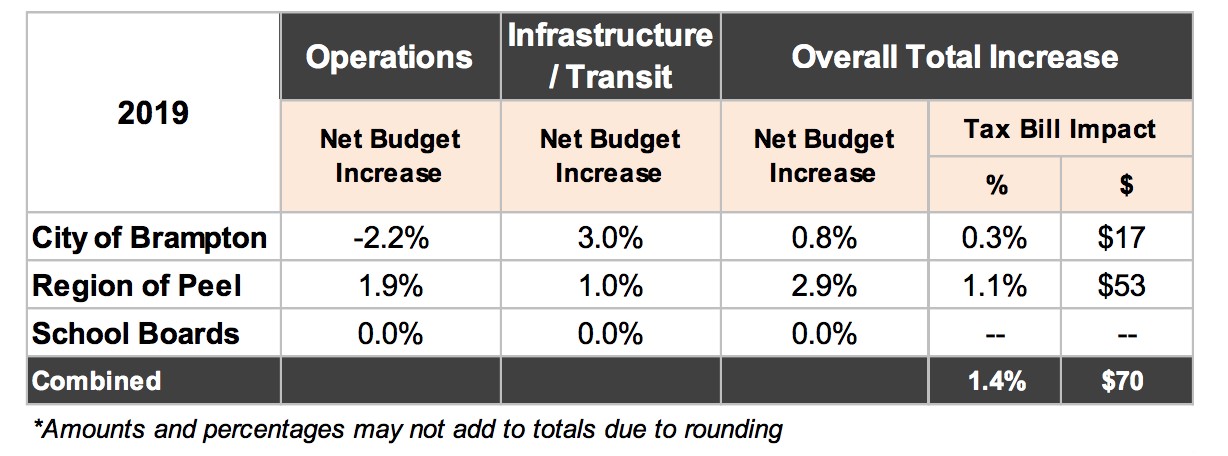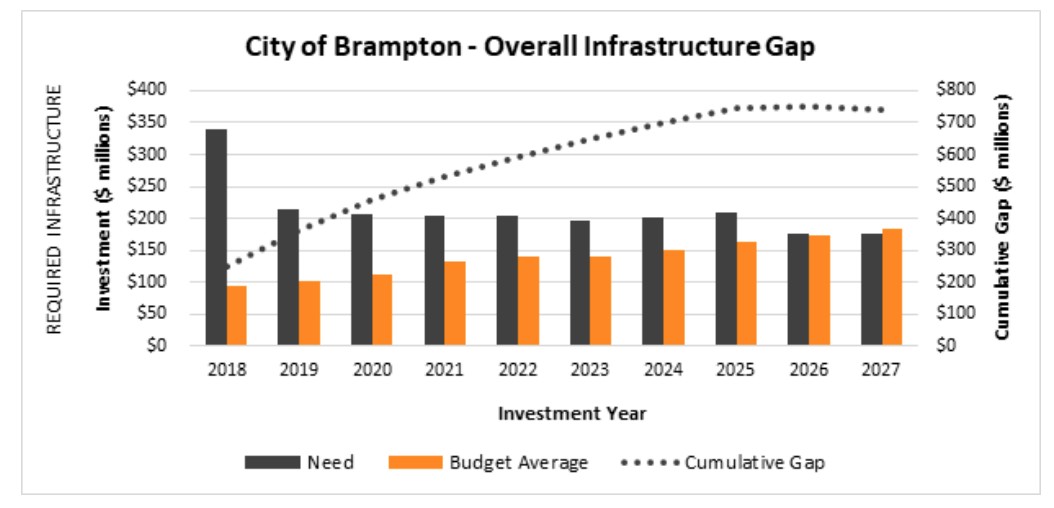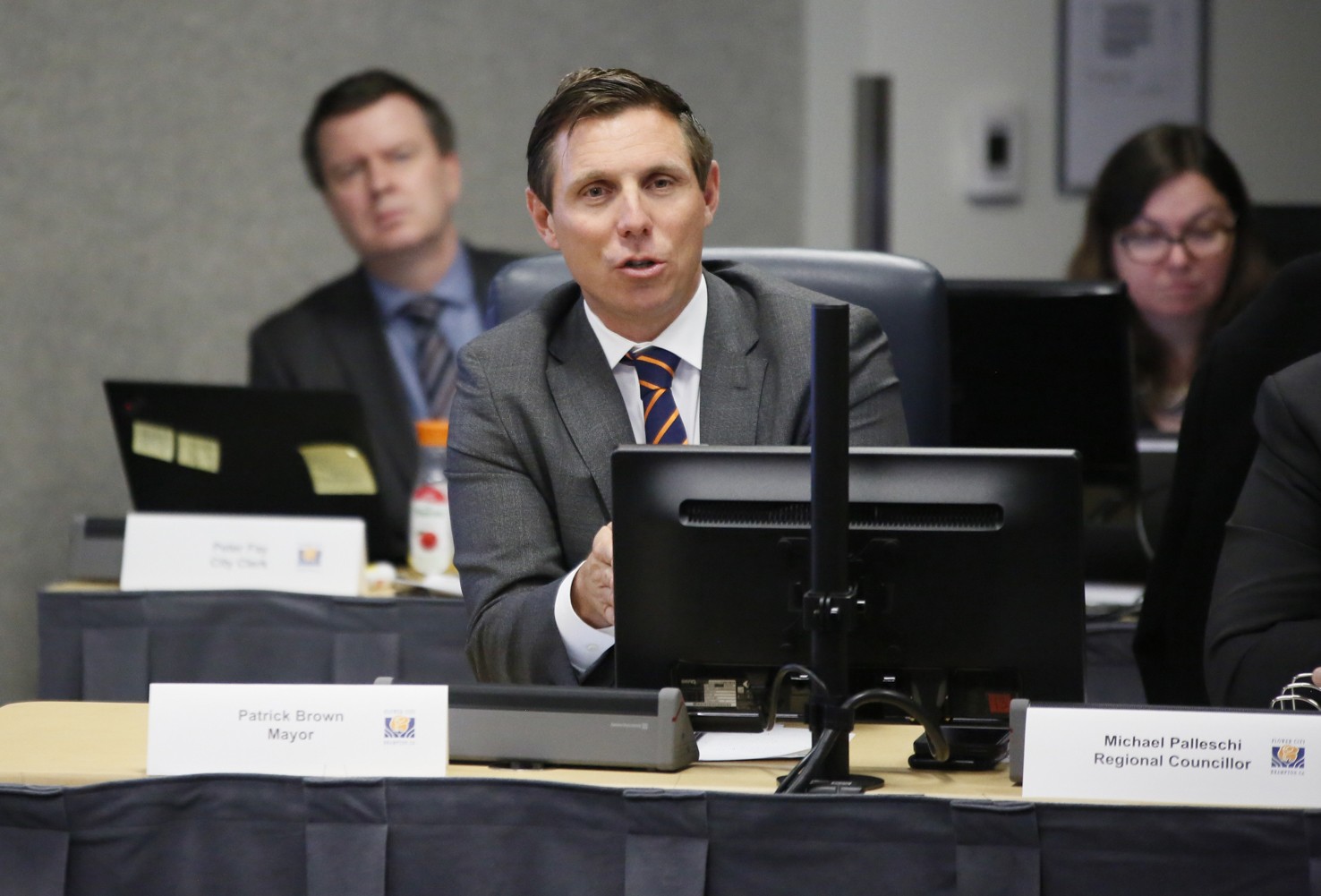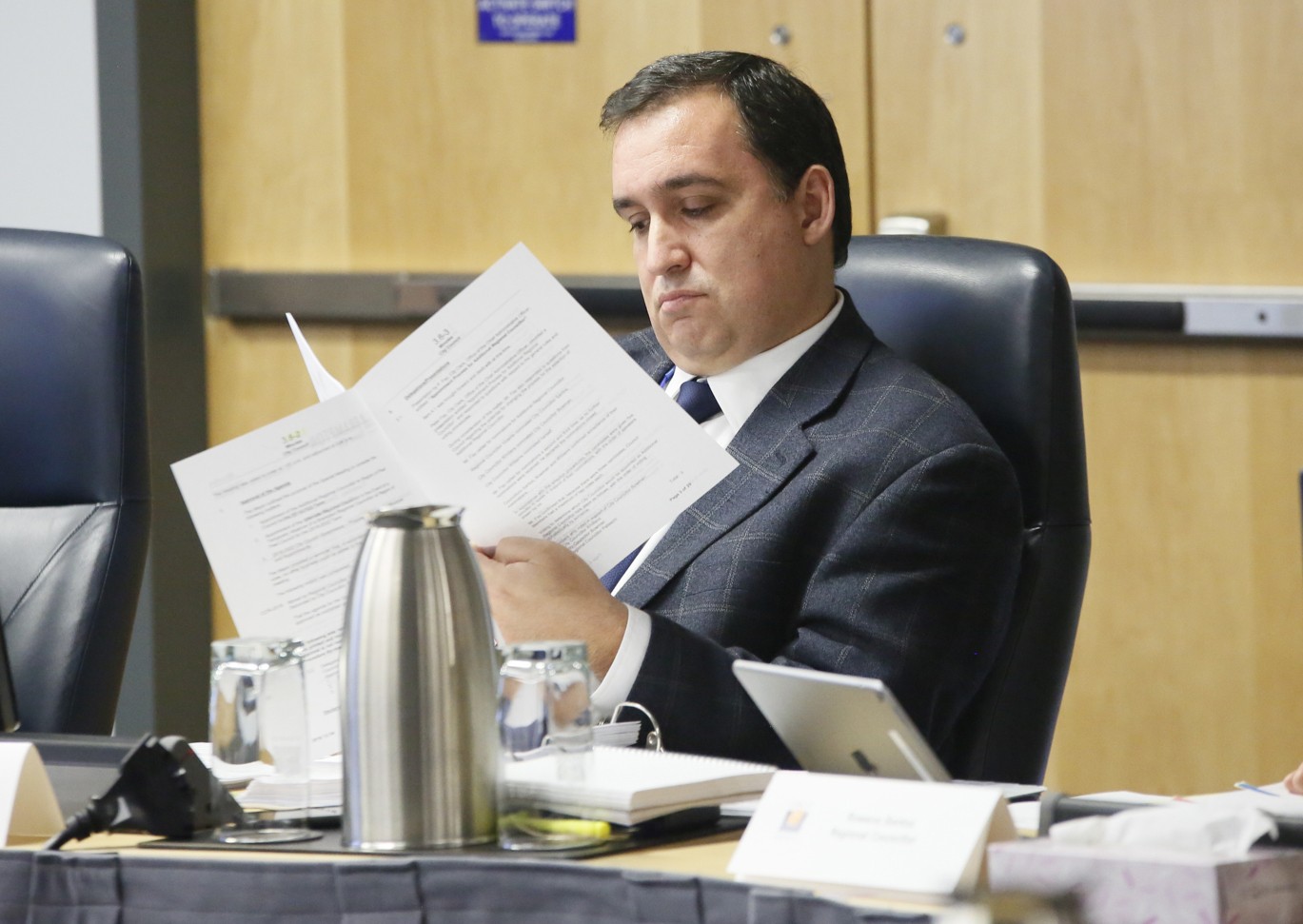
Residents divided on civic pride, but agree council needs to find new revenues
The city’s infrastructure is in good condition and makes me proud: Agree/Disagree?
How would you answer?
The question divided callers Monday evening in a tele–town hall meeting with Mayor Patrick Brown to discuss Brampton’s 2019 budget.
Results shared during the town hall showed that 51 percent agreed with that statement, while 49 percent disagreed.
That’s a harsh reality to face for councillors, who earlier this year received a report from city staff that described most of the city’s $3.5 billion worth of assets as fairly young — the majority of it being less than 20 years old and in good condition. Despite the healthy state of city streets, buildings and parks, it seems nearly half of residents are viewing their city with pessimistic eyes and have been doing so for some time.
A poll commissioned by The Pointer this past summer and completed by Forum Research asked residents a similar question; 46 percent of respondents said they were not proud to be living in Brampton, while 42 percent said yes and the remainder were unsure.
The divide between town-hall callers evaporated when it came to a question on the tax increase. Currently, the city staff has proposed a 0.8 percent increase on the Brampton portion of the bill.

If adopted, that would be the lowest hike the city has seen in almost two decades. For the majority of callers, it wasn’t good enough. Nearly 85 percent of respondents indicated they would prefer a complete tax freeze. That’s nearly a 20 percent increase from the tele–town hall meeting last month, where 68 percent of respondents indicated they want municipal taxes to be frozen.
That strong desire for tax relief is an indication that the city has been leaning too heavily on its residential tax base for far too long. This year’s budget relies on residential ratepayers for almost 70 percent of its revenues.
It’s a conundrum for councillors, who are also dealing with how to catch up on a growing backlog of approved projects, expected to reach $743 million by 2027 if investment levels continue as they are. Currently, the city has a 2 percent infrastructure levy in place to generate dedicated funds for infrastructure. No increase to that levy is proposed for 2019. The city has also proposed introducing a 1 percent levy to fund future transit projects.

That means that, just to maintain what the city has in working order, Brampton will either need to lean further on residential ratepayers or find new ways to earn.
That was the focus of several callers during Monday’s meeting, with long-time Brampton residents sharing stories about opening tax bills, year after year, in dread of the larger figure they’d see.
Brown, who campaigned on a pledge to freeze the municipal portion of the tax bill, says the 0.8 percent increase is close, but he’s still looking to fulfill his promise. He said he’s hearing residents’ concerns loud and clear.
It’s important to note that if Brown achieves his freeze, residents will still face a slight tax increase due to an increase in Peel Region’s budget of 2.7 percent. The regional taxes make up 37 percent of Brampton tax bill; the city’s portion accounts for 47 percent, and the provincial education tax makes up the remaining 16 percent.

Mayor Patrick Brown
“We want to make sure that the portion that we control, that we’re as frugal as possible,” Brown said. “I’m still encouraging council to sharpen their pencils further. I’d love nothing more than to get the city portion to a freeze.”
Brown also pointed out council’s approval for bringing in auditor KPMG to perform a value-for-money audit of the city’s departments, in an effort to find savings. However, he failed to mention that while that report was originally slated to come to council at tomorrow’s meeting so as to be considered ahead of budget deliberations — which begin March 18 — it has now been delayed until May.
Councillor Paul Vicente, who was also in attendance, answering questions from residents, stressed that council is looking to attract more business investment to alleviate some of the burden on residential taxpayers. Like homeowners, businesses and commercial enterprises pay property taxes, and these rates are much more lucrative for the municipality than the lower residential rates. However, because of a relative lack of business investment in Brampton, commercial ratepayers account for less than 30 percent of the total property tax revenue. Healthy cities generally have a rate around 40 percent. This lack of commercial investment was repeatedly mentioned during the fall election campaign and is a main driver behind council’s focus on economic development.
“The city is now [poised] to make sure that, moving forward, we try to diversify and take the burden of the taxes as much as possible from the residential ratepayer and try to shift that burden to the commercial ratepayers,” Vicente said. He pointed to the Brampton 2040 Vision document and its heavy reliance on attracting not only investment from businesses, but also a growing arts and culture scene, which can generate revenue in its own way through tourism and user fee dollars. “Only by diversifying our revenue … can we start to alleviate the burden from the residential ratepayers.”

Councillor Paul Vicente
Interestingly, when people taking part in the town hall were asked where council needed to focus on cutting corners and trimming the budget, economic development topped the list; 23 percent pointed to that department. The second largest contingent, 19 percent, suggested the roads budget needs trimming. Some 18 percent chose arts and culture; transit and recreation and parks each got 11 percent, and 5 percent pointed to the fire department.
Questions about snow removal came up repeatedly among callers. Naturally, it’s a topic that dominates municipal conversation in winter. In the previous town hall, 43 percent of callers asked the city to put more money into snow removal, topping requests for investment in transit, recreation, arts, and the fire department.
Concerns about Brampton’s traffic congestion and the future of mass transit in the city were also common, with one caller expressing fear about driving on city streets that now feel like the “wild west.”
Brown stressed that the city plans to invest heavily in transit over the next three years to alleviate those concerns. The city wants to increase the transit fleet by 16 percent by 2021, and council’s united effort to put the LRT back on Main Street suggests that project could be closer to getting back on track.
“We’re opting to see an extended LRT, but one that doesn’t damage the integrity of the downtown,” Brown said.
The discussion Monday evening, coupled with findings from The Pointer’s summer poll, suggest that while the new council has been in place for over four months now, residents remain concerned about the same issues.
The Forum Research poll for The Pointer found that the largest percentage of respondents, nearly a quarter, wanted the new council to focus on traffic congestion, while 20 percent wanted more attention paid to public healthcare, community policing presence (18 percent) and attracting key employers (10 percent).
These desires corresponded fairly closely with what residents wanted the top focus of their new mayor to be. At the top of the list, an item that Brown appears to be taking to heart, a quarter of respondents wanted high property taxes addressed. Some 24 percent wanted crime to be the top of the list, 17 percent said hospital overcrowding, and 12 percent said traffic congestion.
On healthcare, Brown said he is “sick and tired” of Brampton not getting its fair share and explained to callers that council is launching a “significant campaign” to let the province know it is fed up with the government’s lack of investment in the city. Currently, Brampton receives about half the healthcare dollars of other jurisdictions and has half the number of hospital beds per capita compared to some others.
Brown explained that with a federal election coming up, it is time to remind elected officials in Ottawa that no party wins a majority government without winning in the 905 area code.
“We need to remind them, if they want to stay in government, they can’t treat us this poorly,” he said. “We’re going to kick and scream, essentially, until we get the healthcare dollars we deserve.”
Submit a correction about this story


